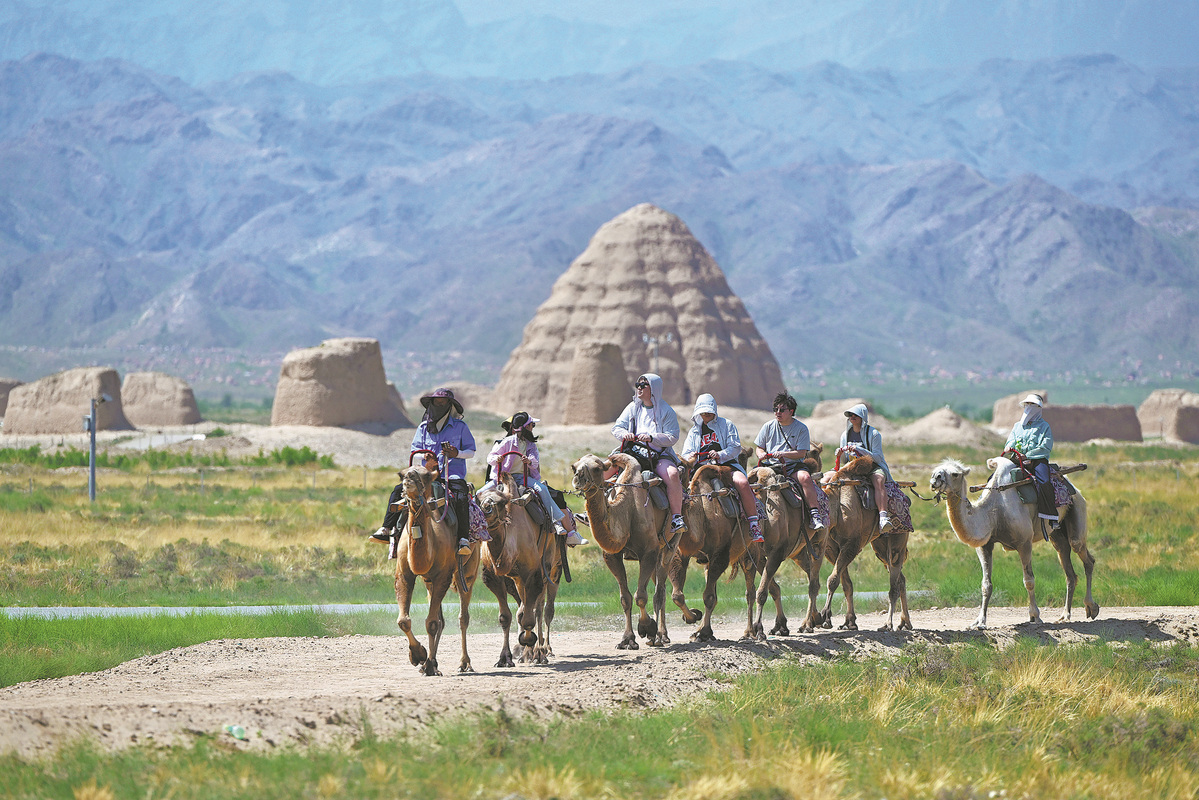World Heritage sites bear new fruit
2025-08-05 17:09 China Daily

Visitors ride camels to tour the Xixia Imperial Tombs in Yinchuan, Ningxia Hui autonomous region, on July 13. Since the tombs were inscribed on the World Heritage List, the scenic spot has seen a tourism boom, with tourists from across the country flocking to experience the charm of Chinese civilization and enjoy the summer holidays.YUAN HONGYAN/FOR CHINA DAILY
As the largest existing ancient Chinese venue for imperial sacrificial ceremonies of agriculture, the Altar of the God of Agriculture often seemed to be neglected by bustling visitors who poured into the nearby Temple of Heaven just across Beijing's Central Axis.
But when the Central Axis was inscribed on the World Heritage List in July last year, with the words “Beijing Central Axis: A Building Ensemble Exhibiting the Ideal Order of the Chinese Capital“, things changed dramatically.
Now the sacrificial altar, as a component of the axis — an ensemble of palaces, ceremonial and public buildings, roads and other aspects governing the overall layout of the old city area of the Chinese capital — is embracing a new scenario. It has received more than 1.2 million visits between July 2024 and last month, a tenfold year-on-year increase, according to the administration of the Beijing Ancient Architecture Museum, which oversees the altar site.
“The altar was once merely a relaxation area for residents of local communities. But when people know it provides a good angle to view the northern section of Beijing's Central Axis, tourists rush to the place now,“ said Lyu Zhou, director of the National Heritage Center at Tsinghua University, who participated in the axis application process. “This is the charm and influence of a World Heritage site.“






